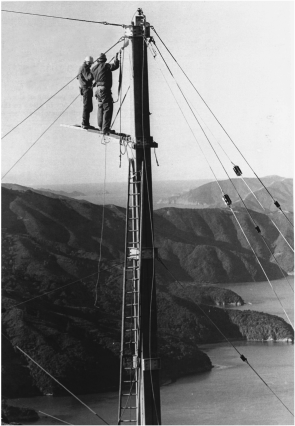Part VHandling Contingencies: Efficient Dispatch in the Very Short Run

Construction of the tower to support the power cable across the Tory Channel in the Marlborough Sounds, New Zealand (Source: Neil Rennie)
The previous sections focused on the question of efficient use of a given stock of generation, consumption and network assets at a point in time, and efficient investment in generation and consumption assets. We saw in Part III that when there is variability in the supply, demand and network conditions, that variability is of no consequence for optimal short-run dispatch unless there are intertemporal constraints binding such as ramp-rate constraints or energy limits. When ramp rates or energy limits may be binding ex post, generators may adjust their dispatch ex ante. We expand on these ideas in this part. In reality, a major component of the real-time minute-by-minute operation of any commercial power system is handling short-run contingencies – preparing for the contingencies that may happen and ensuring the power system remains in balance after they do. All real power systems choose to alter the dispatch of some generators from the short-run optimum in order to reduce the cost of handling contingencies ex post. Furthermore, many power systems do not seek to achieve efficient dispatch in the very short run. Instead, short-run dispatch of generation is often achieved ...
Get The Economics of Electricity Markets now with the O’Reilly learning platform.
O’Reilly members experience books, live events, courses curated by job role, and more from O’Reilly and nearly 200 top publishers.

